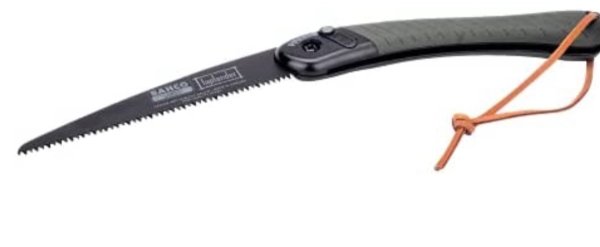-
Posts
1,411 -
Joined
-
Last visited
-
Days Won
5
Content Type
Profiles
Forums
Gallery
Downloads
Blogs
Events
Store
Aircraft
Resources
Tutorials
Articles
Classifieds
Movies
Books
Community Map
Quizzes
Posts posted by APenNameAndThatA
-
-
33 minutes ago, kgwilson said:
I'd just take a battery chainsaw. You can cut down trees cut firewood or make a sculpture if you get bored.
Popular mechanics *loves* this product. Called a pruner but is actually a chainsaw with an 8 cm blade. Runs for “up to 25 minutes”. 1.5 kg unfortunately. Looks *fun*.
-
 1
1
-
-
10 minutes ago, Kyle Communications said:
Airmanship
Can you be more specific?
-
-
11 minutes ago, Kyle Communications said:
Since I have been on the committee I have never seen any reports about tug ops..before that I can not comment.
As far as the tug aircraft being next to you well that goes to how you fly. The tug ops are very standard and well known. They use the far left outside the runway area on the grass next to the trees. The tugs do a very short circuit and always have. Many times I have come in with the tug landing off to my left. You obviously didnt hear the tug radio calls and adjust your circuit or approach accordingly. I would put this down to your inexperience. The tug pilots at Ycab have much more experience than you or me in circuits and landings. Its up to you to maintain your own clearances by situational awareness by your eyes and the radio calls. I have no doubt he would have called before you and knowing how they operate then it would be up to you to maintain your own clearance that makes you comfortable. Thats called airmanship.
This is my opinion and in no way reflects the Ycab committee opinions
Are you suggesting that I should have adjusted my circuit, when I was already in the circuit, for a tug that was joining the circuit?
-
2 minutes ago, APenNameAndThatA said:
I second the comment about carbon monoxide. You can get quantitative detectors. Except you are in a trike, which I ASSUME would make that unlikely. Your symptoms do sound a lot like CO poisoning.
You might want to check your O2 sats while flying and compare them to your day-to-day levels. Supplemental oxygen without carefully examining that issue would be overkill, I expect, although some people use oxygen from a pressure altitude of only 8000 ft if flying at night. I would expect that you can’t get altitude sickness without first being hypoxic. O2 saturation below 90% is a rough cutoff for low oxygen levels but aviators probably want it higher.
If the headache is on one side of your head and throbbing (throbbing = worse with each heartbeat) then you have developed a migraine headache. They are caused by lots of things, including stress, and cause nausea. There are specific preventative treatments for migraine. If you really do love the flights, then stress is much less likely to be a problem.
You would probably already know if you are vulnerable to motion sickness. You could read a book while a car passenger to test this. And desensitise yourself to it. Apparently the three different axies desensitise somewhat independently. You could also see what rollercoasters do. Closing your eyes decreases motion sickness. You might, and might not, like to go for a trike ride with your eyes closed.
Disclaimer: I gave only 230 hrs.
oops
-
 1
1
-
-
I second the comment about carbon monoxide. You can get quantitative detectors. Except you are in a trike, which I ASSUME would make that unlikely. Your symptoms do sound a lot like CO poisoning.
You might want to check your O2 sats while flying and compare them to your day-to-day levels. Supplemental oxygen without carefully examining that issue would be overkill, I expect, although some people use oxygen from a pressure altitude of only 8000 ft if flying at night. I would expect that you can’t get altitude sickness without first being hypoxic. O2 saturation below 90% is a rough cutoff for low oxygen levels but aviators probably want it higher.
If the headache is on one side of your head and throbbing (throbbing = worse with each heartbeat) then you have developed a migraine headache. They are caused by lots of things, including stress, and cause nausea. There are specific preventative treatments for migraine. If you really do love the flights, then stress is much less likely to be a problem.
You would probably already know if you are vulnerable to motion sickness, and you would know if what you had was like motion sickness for you. You could read a book while a car passenger to test this. And desensitise yourself to it by doing the same thing. Apparently the three different axies desensitise somewhat independently. You could also see what rollercoasters do. Closing your eyes decreases motion sickness. You might, and might not, like to go for a trike ride with your eyes closed.
Disclaimer: I gave only 230 hrs.
-
 1
1
-
-
12 minutes ago, Kyle Communications said:
Radio is a big problem at Ycab for all the reasons mentioned before. Redcliffe is on a different freq and I reckon at least half of the aircraft call on the redcliffe freq when they are transiting our airspace. CASA flatly refused the freq change. The issue is pilots NOT reading the Ops manual and letting it sink in. If Caloundra were on their own frequency that would make 3 different radio frequencies within maybe 35 nm. Thats fine provided everyone sticks to the 10nm radius and actually changes to the frequency they are supposed to be on but it seems 50% of the pilots cant seem to do that and you play kamakazi regularly especially around Toorbul and Donny brook as both Caloundra and Redcliffe aircraft use that as a transit all the time. It all goes to education but the issue I see is most of the offenders dont seem to care for abiding by strict ops rules in others airspace or even their own. As I said Airmanship has gone down the toilet.
APen
How about you go back and read what I said. ...Since I have been on the committe since Dec 2019 (sorry it seemed longer due to all the other reports and jobs we do on the committee with the 4hr meeting every month) There has NOT been one complaint about tug operations. I have not missed one committee meeting so thats about 30 meetings I have attended. Plenty of other reports of near misses and stupidity and complaints by other pilots though in that time plus noise complaints. People may not realise it but Ycab has around 200 plus landings and takeoffs a day and I can confirm those numbers as I record every single radio transmission at the airfield as a log
Sorry, I did misread what you wrote. Would you be able to answer my question?
-
 The problem is tyres rotating on the rim with the tyre spinning up on landing or on breaking. It is an argument in favour of running maximum pressures. Does this mean that the valves should be checked and rotated back before a big trip? Spose not. This caused rapid air loss. Solutions or prevention? Should the tyre be glued to the rim? Breaking the bead was only a little difficult.
The problem is tyres rotating on the rim with the tyre spinning up on landing or on breaking. It is an argument in favour of running maximum pressures. Does this mean that the valves should be checked and rotated back before a big trip? Spose not. This caused rapid air loss. Solutions or prevention? Should the tyre be glued to the rim? Breaking the bead was only a little difficult.
-
-
2 hours ago, onetrack said:
You'll gain no advantage from fitting a regular-size handle to a tomahawk head. The length of an axe or tomahawk handle is linked to how you want to use it, and the weight of the axe head.
For hard-hitting strokes that you need to cut down trees, or cut up sizeable thickness of limbs, you need a longer handle with a heavy head.
The handle length is tied to the weight of the head, so fitting a very long handle to a small tomahawk head gives no advantage whatsoever, as the limitation in cutting ability is in the weight of the head.
The 2.5kg of a standard axe head has long been found to be an optimal weight for the fairly standard handle length of about 800mm (31" - 32") - but you can get axe handles up to 915mm (36") - which are more suited to tall people.
The ideal length of handle for a tomahawk head is around 610mm to 660mm (24" to 26"), any longer than that, and you gain nothing, and a longer handle can make swinging the tomahawk more awkward.
A tomahawk is simply designed for carrying lightness, and for light chopping actions as in cutting up small limbs. Trying to chop down a tree with a tomahawk, even with a long handle, will be a painfully slow exercise.
Thank you for your reply. I am amazed at some of the things people on this site know about. The original handle was Only about 300 mm and the current one is 800 mm, so changing the handle still would have been worth it by your measurements of what is ideal. I don't doubt that cutting down a tree with it will be a painful experience, so I hope that any one that I have to cut down is small. Also, at 193 cm, I'm pretty tall. Occasionally, I have chopped down trees right at the base, and having the full handle length available to me was handy so I did not have to bend down too much. (My understanding is that all adults have their hands about the same distance from the ground, FWIW.)
Given that E= mV^2, (energy = mass times the square of the velocity), I would have thought that a longer handle would have made the axe head faster and therefore have more kinetic energy to be converted into cutting the wood. But, it is an empirical question, so maybe I will find that the handle is too long.
Another option is those chainsaw-chain-like survival things that people can use to chop down trees.
-
It's a 400 g axe head on a normal-sized axe handle. Full-sized axe heads weigh about 2.5 kg. It looks stupid and out of proportionate. I'm taking it camping.
-
2 hours ago, jackc said:
Well maybe it’s time to run a airmanship seminar in a few places and help get people up to speed. One of our CDFG members hosted a Flight Planning one a couple of weekends ago along with a bush luncheon that was very social. Another instructor brought along the latest VFRG books for sale along with other CASA. publications. A great training day and social as well.
I got a lot out of it and we had about 15 or so attendees. Maybe there needs to be more days like this?
I'm ashamed of myself for not realising this. If the airmanship at Cabulture is so s—, maybe that's the fault of... Caboolture? Who knew? (I'm not suggesting the jackc shares my views about this matter, just to be clear.)
-
 1
1
-
-
11 hours ago, Kyle Communications said:
Well everyone who flys at Ycab flys with the gliders as they stay out of the way of aircraft flying the main circuit pattern. They fly a different pattern. I have been flying there since 2010 and I have only been on the committee since xmas 2019 so I can tell you since then there is not one report about any tug operations. Considering they fly a lot of ops 3 days a week and in the busy times like fri,sat and sundays also changing ends and runways when the wind changes. This may tell you something
I can only tell you what I see and what is reported. I have my own opinions on the subject and it was a major discussion about airmanship at the last meeting in fact and what we can do to try to get things back on track.
Oh. So you do get reports about tugs. I thought you thought you didn't get any. And, can you answer my question? If the tug operator was so experienced, how did he end up beside me when I was already in the circuit?
-
12 hours ago, Kyle Communications said:
He was probably using his experience to avoid you..just saying. We never get reports about tug pilots ops but plenty of reports on normal pilots and aircraft ops or should I say inops. Airmanship is lacking now days and its very visible. I think this all goes back to the training given now. Its not like it used to be when I started flying back in the mid 1980's. Airmanship was a big part of training. It now seems to be lost. Maybe I might be a old fuddy duddy but there are plenty of people that go and watch the comedy on the boat ramp scenario on sunday mornings. One of the issues is the airfield is now so busy but that still does not exemplify the situation. Students and low time pilots need to be more aware of what they are doing and to me it just doesnt seem to be happening. I am no expert by any means but when I fly I try to make sure I know where everyone is in the circuit by eye and radio. I have had to take exvasive action a few times simply from other pilots not looking or listening.
I was the one in the circuit, so I had right of way. He came up beside me in a faster aircraft. Again, there is no such thing as using his experience to avoid me. There is such a thing as him using his experience to do something to avoid me. Can you please suggest what it might have been? I was already in the circuit, at the right height, flying in the correct direction, so what was he doing beside me, then above me? Hmm? Furthermore, what exactly do you mean you never get any reports about tug pilots? If you were there in 2018 or 2019, you would have got the report. Did you get the report or not?
-
 1
1
-
-
-
Just now, APenNameAndThatA said:
There is no such thing as inexperience causing an “incident”. There is such a thing as inexperience causing something else that causes and incident or “incident”. If the tug pilot knew where I was and was so competent, how did he end up on my right side and then above me, when I was already in the circuit? Why didn’t he just stay away? And why didn’t he use his radio?
-
On 19/7/2022 at 5:45 PM, Kyle Communications said:
Ycab is non controlled and has big glider ops for at least 3 days a week Fri,Sat and Sundays. The tug and the gliders always stick to the grass on the non use side of the runway. On Rway 12 now Rwy 11 they are always on the northern of the bitumin on the grass and everyone else will use the bitumin but mainly the grass on the southern side of this runway side. The tug pilots are very experienced there and we do not get any reports about their operations. They are very experienced and regularly will be flying in to their side of the runway while you are coming in on the other side of the runway. The tug always does a short inbound circuit. Everyone who trains at or knows Ycab knows this. I have been flying there since 2010 and never had a incident with a glider or the tug but I have also landed many many times with the tug on my left. I usually taylor my approach to make sure the tug is in front. Your "incident" most likely was pretty much due to your inexperience flying the aircraft and also flying at a airfield that has many ops and also different type of aircraft. I would be very confident that the tug pilot knew exactly where you were. Ycab has warbirds, gliders, RAA ,VH and VH Experimental also first world war and many other types. Living with all of these different aircraft can be difficult and it really is just experience. Ycab back then there was NO requirement for radio in the aircraft. This has now changed and Ycab is a radio mandatory airfield. Cosider yourself lucky as well because back then when I started we had meatbombers there as well..they finally got rid of them out of there
There is no such thing as inexperience causing an “incident”. There is such a thing as inexperience causing something else that causes and incident or “incident”. If the tug pilot knew where I was and was so competent, how did he end up on my right side and then above me? Why didn’t he just stay away? And why didn’t he use his radio?
-
 1
1
-
-
-
6 hours ago, turboplanner said:
Magic carpet syndrome. Easy not to have this happen to you; just don't fly below the minimum height of 500 feet AGL.
Flying below 500 ft is legal if you are landing. They landed, so...
They were worried about a shark following a surfer. The pilot should have left the screaming and pointing to the passenger. 🤦♂️
-
 1
1
-
-
On 5/10/2022 at 5:48 PM, Garfly said:
PenName, can you expand on this? What 'layer cake' do you mean? The 36 DME Class C step?
That won't be on the new WAC. They're talking PRD areas only. So, presumably, Pine Gap will be there - as it is already on Visual Terminal Chart.
And as to FIR frequencies, I'd have thought your OzRWYs/AvPlan plus the ERC Low chart had you well covered in that department.
If you want WACs to be all things to all people - especially nowadays - they will lose their particular usefulness.
It doesn't take much magenta ink to cover useful detail at 1:1,000,000
Good point about class c steps
-
1 minute ago, RossK said:
And then the question is, if you've got an RPL on a drivers medical, why bother with RAAus and it's yearly fees when the CASA reg and RPL are a once off fee, for greater privileges.
Cheaper maintenance, and so RA-Aus people can fly your plane.
-
57 minutes ago, jackc said:
It will be quite a while before RAA get those privileges for RPC holders. In the meantime, many will go VH for lower cost and more privileges.
What extra privileges do you get from VH reg?
-
21 minutes ago, APenNameAndThatA said:
I'm pretty sure that if you have a RPL then you can fly a 24 reg plane in controlled airspace.
Also, if your flying school is in controlled airspace, you can learn RA-Aus there.
-
8 hours ago, jackc said:
It’s all the talk at SAAA, there was a seminar on it a Narromine apparently, lots of interest. Car medicals for GA will probably make many go back to GA, many planes just sitting in hangars will take to the skies once again. RAA people will upgrade and change over to VH and be able to fly in controlled airspace, too?
I'm pretty sure that if you have a RPL then you can fly a 24 reg plane in controlled airspace.
-
 1
1
-









RA-Aus Don't Know How to Do "Occurrence Management
in Aircraft Incidents and Accidents
Posted
It was reported.